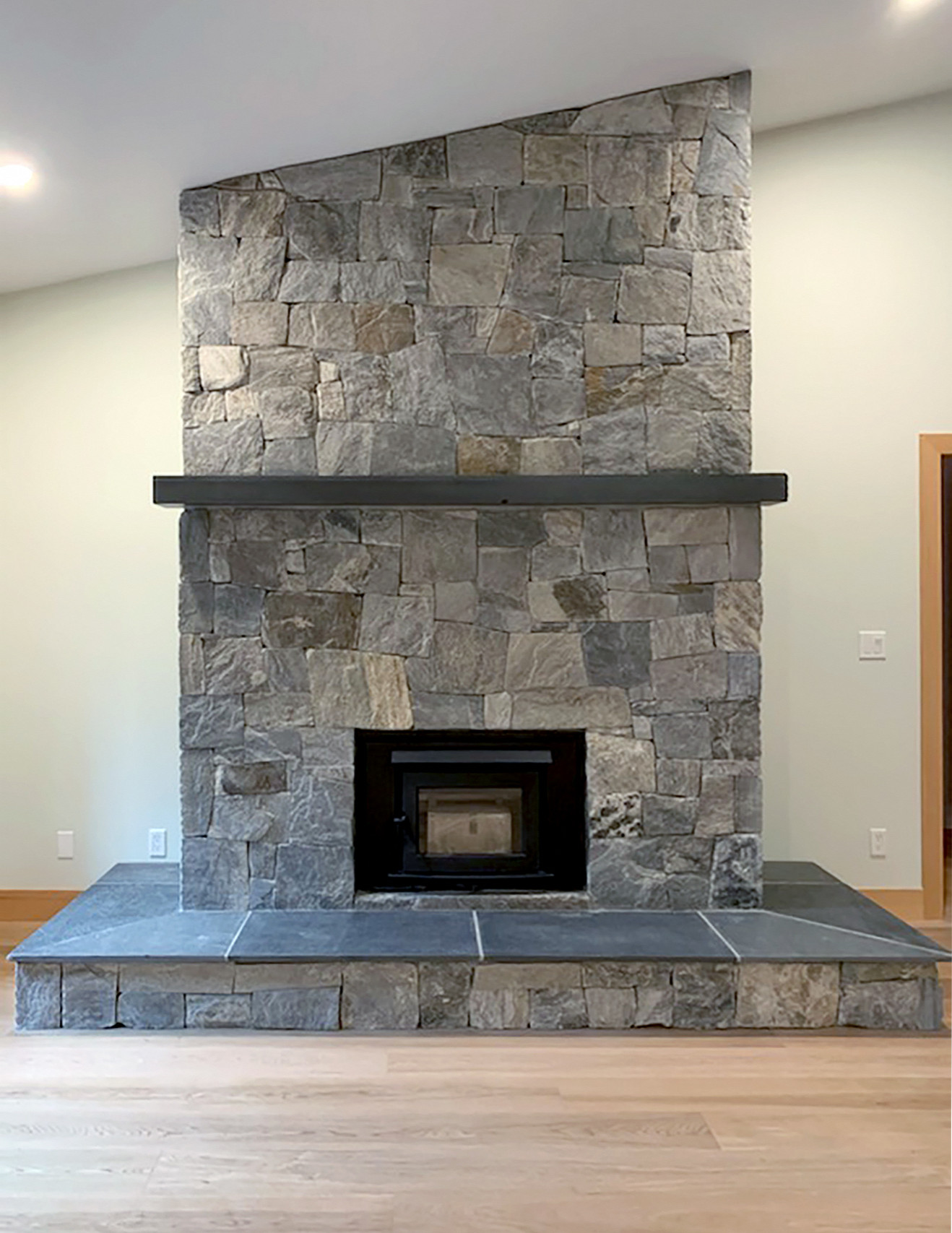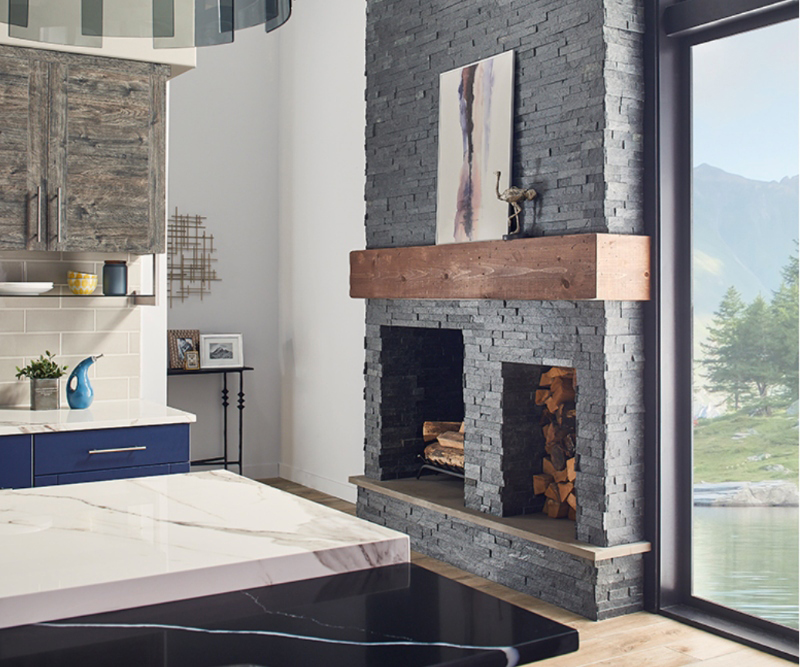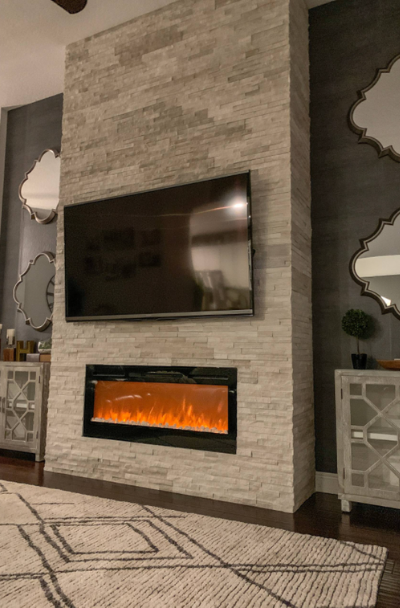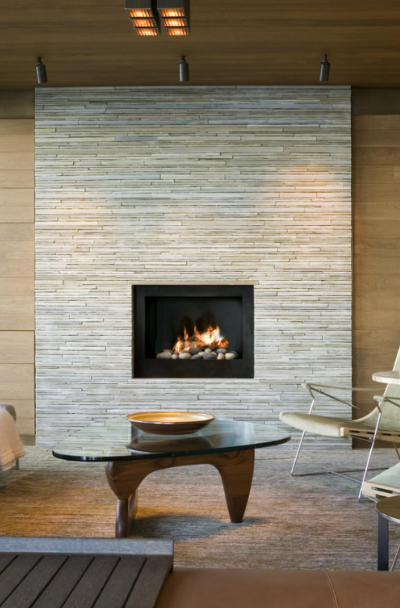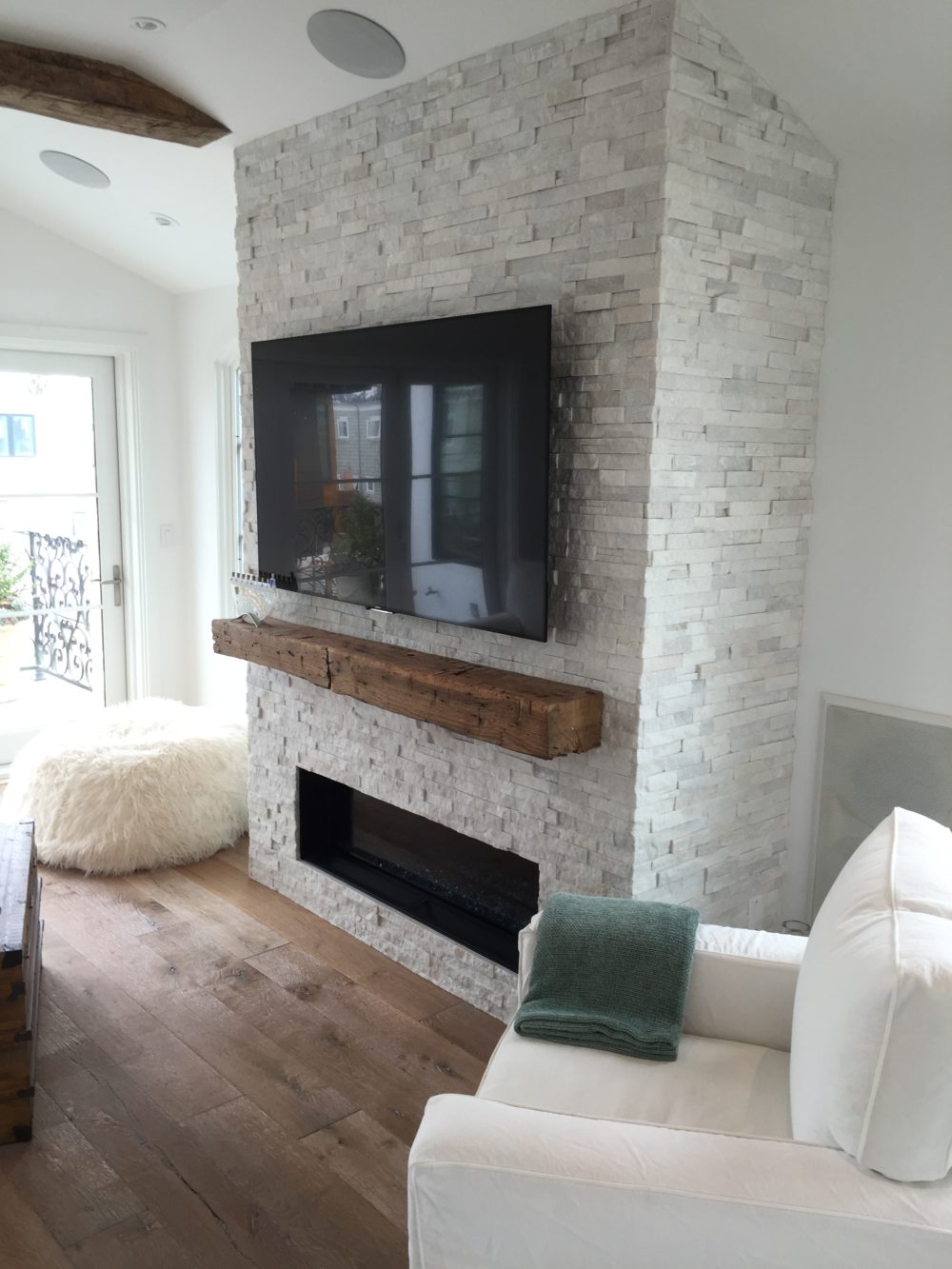A thin stacked stone fireplace brings natural elegance to any living space without the bulk of traditional stonework. These lightweight veneers offer the authentic look of full-bed stone at a fraction of the weight and cost, making them ideal for both new constructions and renovations. Whether you’re aiming for a rustic charm or contemporary sophistication, thin stacked stone provides versatile design options that complement various architectural styles. This guide explores six essential aspects of incorporating thin stacked stone into your fireplace design, from material selection to installation techniques.
Understanding Thin Stacked Stone Materials
Thin stacked stone veneers are typically made from real stone slices or manufactured stone composites, each offering distinct advantages. Natural stone veneers provide authentic texture and color variations, with common options including slate, quartzite, and limestone. These materials are cut to about 1-inch thickness, maintaining the stone’s genuine appearance while reducing weight. Manufactured stone alternatives replicate natural stone through molds and pigments, offering more consistent sizing and color control at lower price points.
The weight difference between thin veneers and full-bed stone is significant, with veneers weighing 8-15 pounds per square foot compared to 40-60 pounds for traditional stone. This makes them suitable for installation over existing walls without requiring structural reinforcement. Both natural and manufactured options come in various shapes, from irregular fieldstone patterns to uniform ashlar designs, allowing customization to match your preferred aesthetic.
When selecting materials, consider the fireplace’s heat exposure. Most thin stone veneers are heat-resistant, but verify the manufacturer’s specifications, especially for wood-burning applications. The stones’ thickness also affects installation methods – thinner pieces (under 1 inch) often use adhesive-only application, while thicker pieces may require mechanical fasteners for added security against heat-induced expansion.
Design Styles for Thin Stacked Stone Fireplaces
Thin stacked stone adapts beautifully to multiple design aesthetics, from rustic lodge to modern minimalist. For traditional spaces, a random ashlar pattern with earth-toned stones creates timeless appeal. The varied shapes and natural color shifts in stacked stone mimic centuries-old masonry work. Pair this style with a substantial wood mantel for a classic hearth appearance that feels both grand and inviting.
Contemporary designs benefit from the clean lines and uniform appearance of precision-cut stacked stone. Rectangular stones in monochromatic grays or whites create a sleek, architectural look. These modern interpretations often extend the stone vertically to ceiling height or horizontally along adjacent walls for dramatic effect. Metallic accents and floating shelves complement this style well, maintaining the fireplace’s visual lightness.
Transitional styles blend elements from both approaches, perhaps using stacked stone just on the firebox surround while leaving the chimney breast drywalled. Another popular variation is applying stone to just one side of the fireplace for an asymmetrical look. The thin profile allows creative applications like wrapping stone around corners or creating stone “rugs” that appear to spill onto the floor without structural concerns.
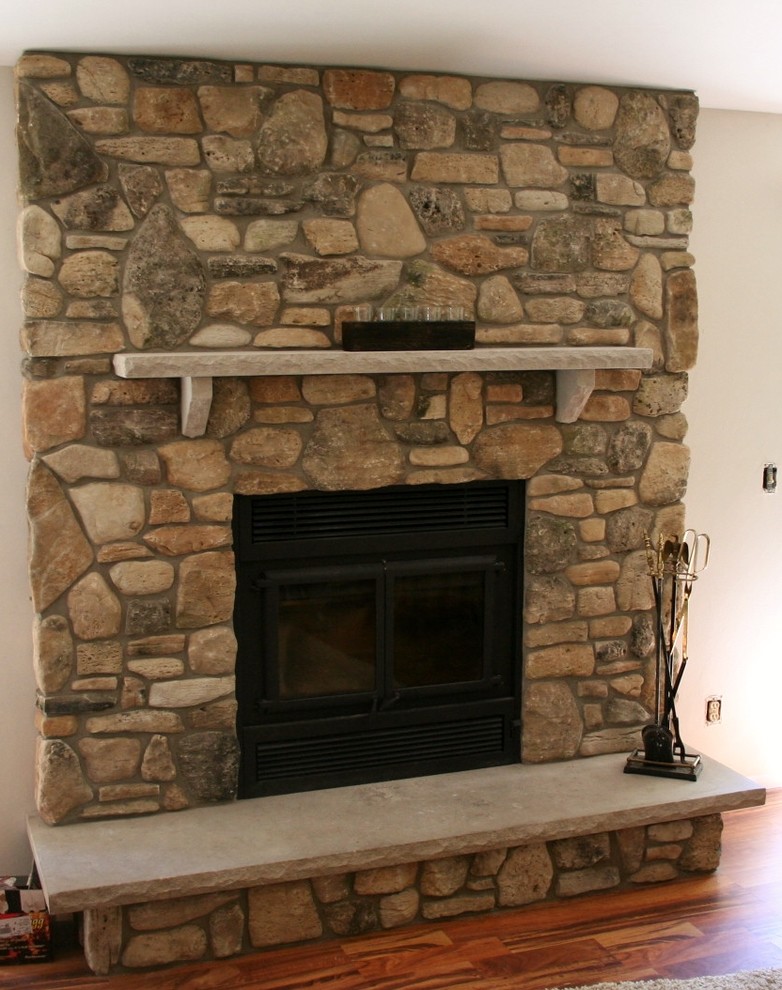
Surface Preparation for Installation
Proper surface preparation ensures your thin stacked stone veneer adheres securely and lasts for decades. Begin by cleaning the existing fireplace surface thoroughly, removing any loose material, dust, or grease. For masonry fireplaces, repair cracks or crumbling mortar before proceeding. Wood-framed surfaces require cement backer board installation to create a suitable substrate that won’t be affected by heat or moisture.
The substrate must be flat and stable – any irregularities greater than 1/4 inch should be corrected. Use a long level to check for plumb and plane, applying patching compound to low spots as needed. Some manufacturers recommend applying a waterproofing membrane over cement backer board, especially in areas with high humidity or potential moisture exposure.
For wood-burning fireplaces, maintain proper clearances between the stone veneer and firebox opening as specified by local codes (typically 6-12 inches). Install metal lath over the prepared surface if using mortar-based installation methods, securing it with corrosion-resistant fasteners. This step isn’t necessary for adhesive-only systems but provides extra reinforcement in high-heat areas.
Installation Techniques and Tips
Thin stacked stone installation follows either mortar-based or adhesive methods, depending on the product specifications. Mortar applications start with a scratch coat applied over metal lath, followed by buttering mortar onto each stone’s back. Maintain consistent joint widths (usually 1/2 inch to 1 inch) and periodically check for level as you work upward from the base. Adhesive systems use specially formulated masonry adhesives applied directly to the substrate in manageable sections.
Start installation at the corners if your design includes them, using pre-fabricated corner pieces or carefully overlapping field stones. Work in small sections of about 10 square feet at a time to prevent the mortar or adhesive from skinning over before stone placement. Vary stone sizes naturally as you go, stepping back frequently to assess the overall pattern and color distribution.
Cut stones as needed using a masonry wet saw with a diamond blade for clean edges. Nip any sharp corners slightly to prevent chipping and create a more natural appearance. Leave expansion joints where the stone meets other materials like wood mantels or drywall, filling them with color-matched caulk rather than mortar to allow for movement.
Grouting and Finishing Options
Stacked stone fireplaces offer multiple finishing approaches for the joints between stones. Traditional mortar joints provide an authentic masonry look and help stabilize the installation. Use a pointing trowel to press mortar into joints, then tool them to a consistent depth before the mortar fully sets. For a cleaner appearance, some homeowners opt for raked joints where mortar sits slightly recessed behind the stone faces.
Groutless installations create a tighter, more contemporary look with stones nearly touching each other. This method requires precise cutting and fitting but eliminates maintenance concerns about mortar deterioration. Some adhesive systems specifically accommodate this approach with interlocking stone edges. Semi-grouted installations compromise between the two, using minimal mortar just deep enough to secure stones while maintaining the appearance of tight joints.
After installation, protect surrounding areas from mortar smears by covering floors and furniture. Clean excess mortar from stone faces while it’s still pliable using a damp sponge. Once cured, apply a penetrating sealer to natural stone surfaces to protect against staining and moisture absorption, reapplying every few years as needed. Manufactured stone typically doesn’t require sealing but benefits from occasional cleaning with a stone-specific cleaner.
Maintenance and Long-Term Care
Proper maintenance preserves the beauty and integrity of your thin stacked stone fireplace. Dust regularly with a soft brush or vacuum attachment to prevent buildup in the textured surface. For deeper cleaning, use a pH-neutral stone cleaner and soft bristle brush, rinsing thoroughly with clean water. Avoid acidic cleaners or pressure washers that could damage the stone surface or mortar joints.
Inspect mortar joints annually for cracks or deterioration, repairing them promptly to prevent moisture infiltration. For small repairs, use color-matched mortar or caulk to blend with the existing work. Address any efflorescence (white mineral deposits) by brushing dry, then applying a diluted vinegar solution if necessary, followed by thorough rinsing.
Consider the fireplace’s usage when planning maintenance. Wood-burning units may require more frequent cleaning to remove soot from the stone surface. Gas fireplaces generally stay cleaner but benefit from occasional inspection of the stone near heat sources. With proper care, a thin stacked stone fireplace maintains its striking appearance for decades, becoming a lasting centerpiece in your home’s design.
Stacked Stone Fireplace Ideas Sebring Design Build
Natural Stacked Stone Veneer Fireplace Stone Fireplace Ideas
Stacked Stone Fireplace Ideas Sebring Design Build
Thin Reef Ledgestone for Stacked Stone Fireplace,Ledge Stone from
Would love this for my fireplace surround. // Thin Charcoal
Stacked Stone Arctic White Panels – Bourget Bros
Related Posts:

